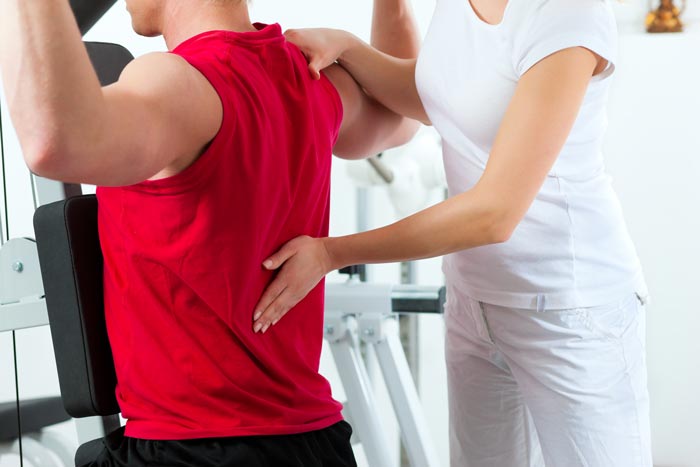Spinal Stenosis
Spinal Stenosis Specialists in New York City
Spinal stenosis occurs when open spaces within the spine become narrowed, causing pressure on the spinal cord and nerves of the spine. Spinal stenosis usually occurs in the spinal canal, in the neck or lower back. Stenosis of the spine is most common in patients over 50, although it can occur in younger people as well.
Spinal stenosis can cause no symptoms, but depending on the location and severity of the spinal pressure, it can cause pain, numbness, weakness, and in extreme cases bowel and bladder problems.

What Causes Spinal Stenosis?
Spinal stenosis, or spinal canal stenosis, can naturally occur through the aging process, as the spine becomes compressed through years of normal wear. In other cases, spinal stenosis can be the result of an injury, accident, or a related spine condition such as a herniated disc.
When patients under the age of 50 are diagnosed with spinal stenosis, it is usually due to a genetic cause called congenital spinal stenosis, which means they are born with a small spinal canal. This can put pressure on areas of the spine and may require special spinal stenosis treatment.
Common Causes
Symptoms can overlap from condition to condition. It’s therefore important to be seen by a specialist who can provide a comprehensive diagnosis and integrated treatment plan, which may include spinal stenosis surgery.
Bone spurs
Bone spurs form between the vertebrae in any patient as they age, and they usually occur in people over 40.
Arthritis
Osteoarthritis is a common condition among people over 50. It can cause disc degeneration, bone spurs, and an overgrowth of ligament that can lead to spinal stenosis. Rheumatoid arthritis is a less common cause of spinal stenosis, although the inflammation it causes can create pressure (usually in the neck) that leads to stenosis.
Degenerative Spondylolisthesis and Degenerative Scoliosis
Slippage of one vertebra over another is often caused by spinal degeneration. Frequently, this is seen with lumbar spinal stenosis.
Herniated Disc
Slipped or ruptured discs occur when the cushions in the spine that act as shock absorbers get weaker. Slipped discs have multiple causes, including age, obesity, and injury. When a disc ruptures, it can put pressure on the spinal cord or nerves.
Injuries
Trauma or impact to the spine can cause spinal fractures or dislocations, which can then cause damage to the spine canal. These injuries are commonly the result of sports, car accidents, or falls.
Tumors
Tumors are abnormal growths of soft tissue which can occur in or on the spine. The growths put pressure on the spinal cord and vertebrae, and can lead to bone loss and displacement.
New York’s Spinal Stenosis Specialists
Och Spine at NewYork-Presbyterian at the Weill Cornell Medicine Center for Comprehensive Spine Care in New York provides state-of-the-art spinal stenosis treatment, including minimally invasive spinal stenosis surgery. Browse through our site to find more information on stenosis of the spine. You can also contact us to schedule an appointment with a spinal stenosis doctor in New York.
We’ve Got Your Back
For more information about our treatment options, contact our office today.



